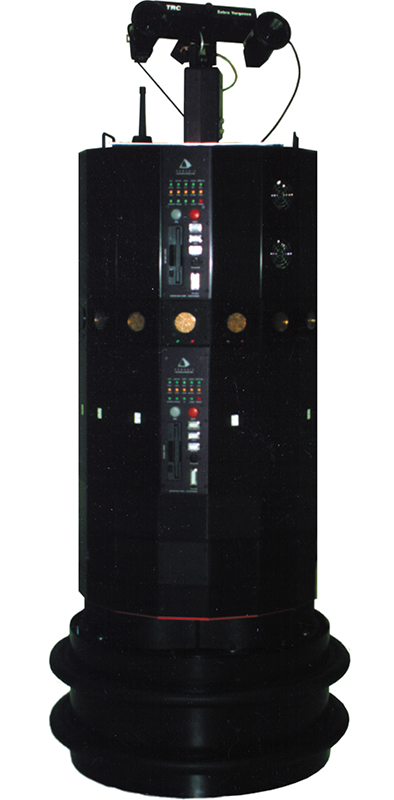Giving Machines the Vision
Robots are entering the work force. That might not be so surprising on Earth, but highly capable automatons can also offer a helping robot arm or two to spacewalking construction crews.
Amherst Systems, Inc., of Buffalo, New York, has advanced the visual acuity of robots through contracts sponsored by Johnson Space Center and Langley Research Center. NASA has been evaluating the use of robots as extravehicular companions to spacewalking crews for help and fetch duties.
One such mobile robot developed by Amherst Systems for NASA is the prototype Foveal Extravehicular Activity Helper Retriever, or FEVAHR for short. FEVAHR detects, recognizes, and tracks objects described to it in English, and approaches these objects when instructed to do so, while also dodging obstacles. This robot coordinates its head and body motion to support target search, track, and obstacle avoidance. FEVAHR's visual system is primed by a Semantic Network Processing System so that the robot's vision and behavior are tuned to the task requested.
Central to the robot is the use of foveal machine vision, a new technology that emulates the sophisticated foveal processes found in biological systems. Foveal vision is nature's way of filtering out and reducing the burden of irrelevant information. In fact, a human brain that could process the extraneous information tossed out by foveal vision would have to weigh several tons.
Amherst Systems' approach is to achieve the throughput benefits of foveal vision, but apply it to machinery required to interact intelligently with the real world. The result is a faster, less computer-like response than the response that would have resulted, once all the visual information was processed.
Vision is typically acknowledged as the most "general purpose" method of acquiring information, supporting a wide range of useful tasks (e.g., search, track, recognition, and manipulation). While a traditional camera can collect much information, a majority of this data is irrelevant for any given task.
The charter of Amherst Systems' Machine Vision Department is the development of commercially feasible technology that adopts attractive aspects of biological foveal vision. If robots are to perform useful tasks in a non-deterministic world--rather than being relegated to controlled and very predictable settings like assembly plant floors--they must be imbued with information from which to make decisions.
Amherst Systems' optical and infrared sensor systems have graded acuity and context sensitive sensor gaze control. Imaging hardware is controlled by video processing algorithms. The system can gaze electronically by situating the fovea at different locations within the imager's visual field. The foveal machine vision offers improved performance, greater platform intelligence, and autonomous operation. Lower system cost is attainable, compared to traditional uniform acuity sensors.
This technology is currently being delivered to university research facilities and military sites. Foveal machine vision for mobile robots is intended for applications in poorly controlled environments where response time is critical.
An employee-owned small business, Amherst Systems was founded in 1975. Work in hardware and software development has taken the firm into areas traditionally regarded as separate engineering fields, from sensor chips, pointing mechanisms, and multiprocessors, to visual attention and image processing.

Amherst Systems, Inc.'s FEVAHR detects, recognizes, and tracks objects described to it in English.













